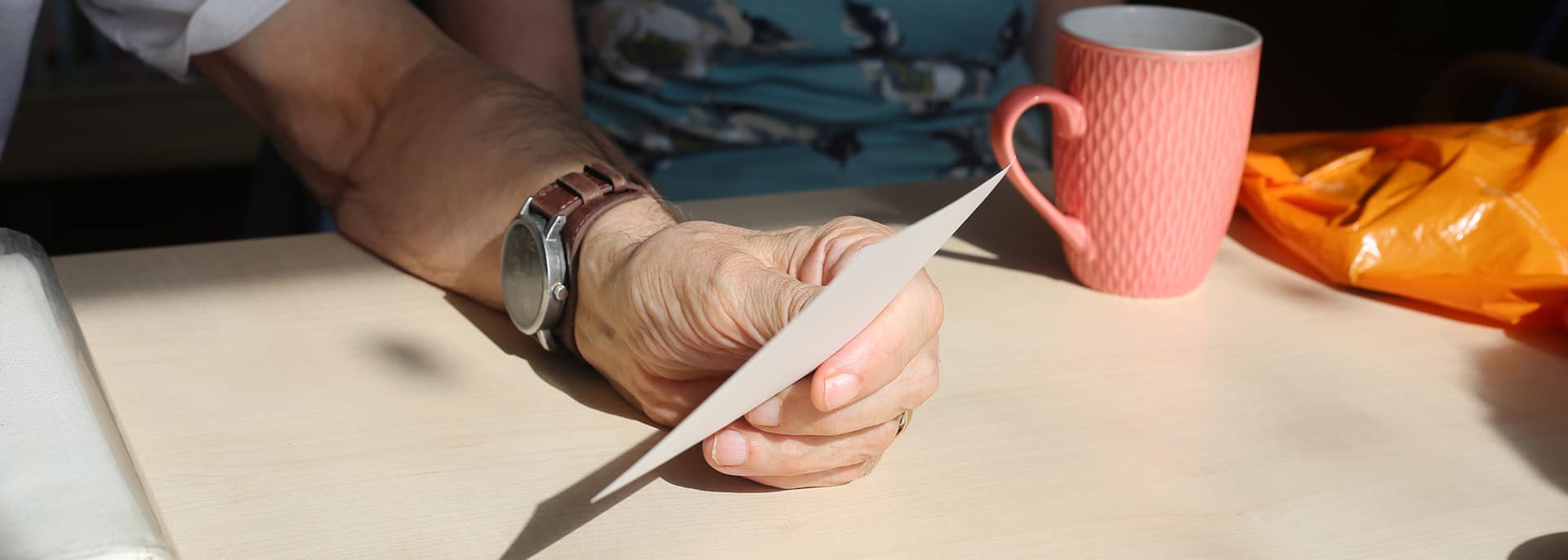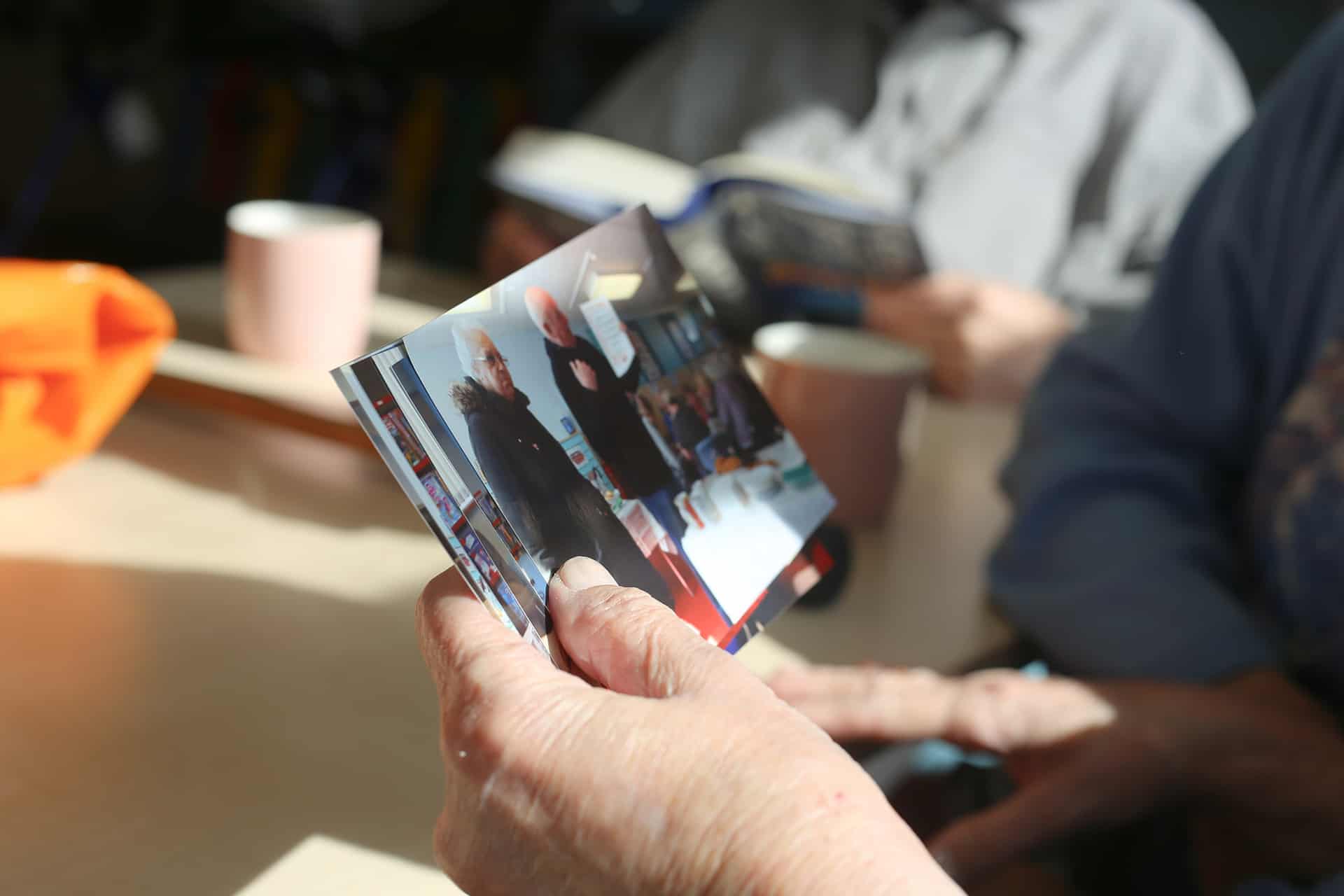Working in Rounds Green Library
When beginning the Living Memory project, I wanted to work with the public surrounding the Lion Farm Action Centre because I felt the Local Trust would value from the creative involvement with the project and the community could get further connected through the exploration of their shared history. I specifically wanted to engage in conversations and listen to people’s stories as well as look through their vernacular imagery to make space for providing a cathartic experience for the participants.
I am currently in the early stages of working with a group in Oldbury, Sandwell who meet twice a week at their local library for friendship coffee mornings. This group has been arranged by the residents themselves and is primarily aimed at the elderly community. I am starting to run small workshops with them, discussing their family photographs and vernacular images of the local area within a group setting. My intention is to facilitate a conversation between the members about their experiences with the local area and discuss its development. I want to focus on them as a collective rather than interview them separately. The group used to be larger but they run events to try and get others involved for example cream teas and Shakespeare themed afternoons. However, the residents that do attend have become a tight-knit group which is reflected in the jovial environment that they create. This is something I want to focus on through the research and development bursary I am undertaking, the relationships and friendships they’ve created through exploring these shared histories is something I want to celebrate and explore through workshops and conversations.
Whilst doing this, we are able to have discussions about the commonalities within the album. Particularly reflecting upon, and possibly challenging, the traditional conventions of the family album reflecting the standards set out by the Kodak reign from the 1900’s. Patricia Holland and Jo Spence discuss this when stating that compulsive smiles in the everyday image highlight satisfying relationships and the formality of family ties. This opens up the discussion to what was happening behind the staged vernacular photographs, and what aspect of this is shared amongst the group as well as looking at the obvious similarities they share throughout the albums. Photographic Memory: The Album in the age of Photography (2011) by Verna Curtis discusses the experience the physicality of the album image, and the sense of possession holding the material object as a ‘thing’ can enhance. What I am interested in is what happens when this intimate physical image is taken from the private sphere to the public, how does this change the reading of the image? This is again something that working in a communal group can help explore, I have already noticed that each person looks at each photograph differently and notice different things to discuss within the group. I want to expand on this, and use the vernacular photographs as the conversation point to give these participants a platform to share their history and the bond they’ve created.



